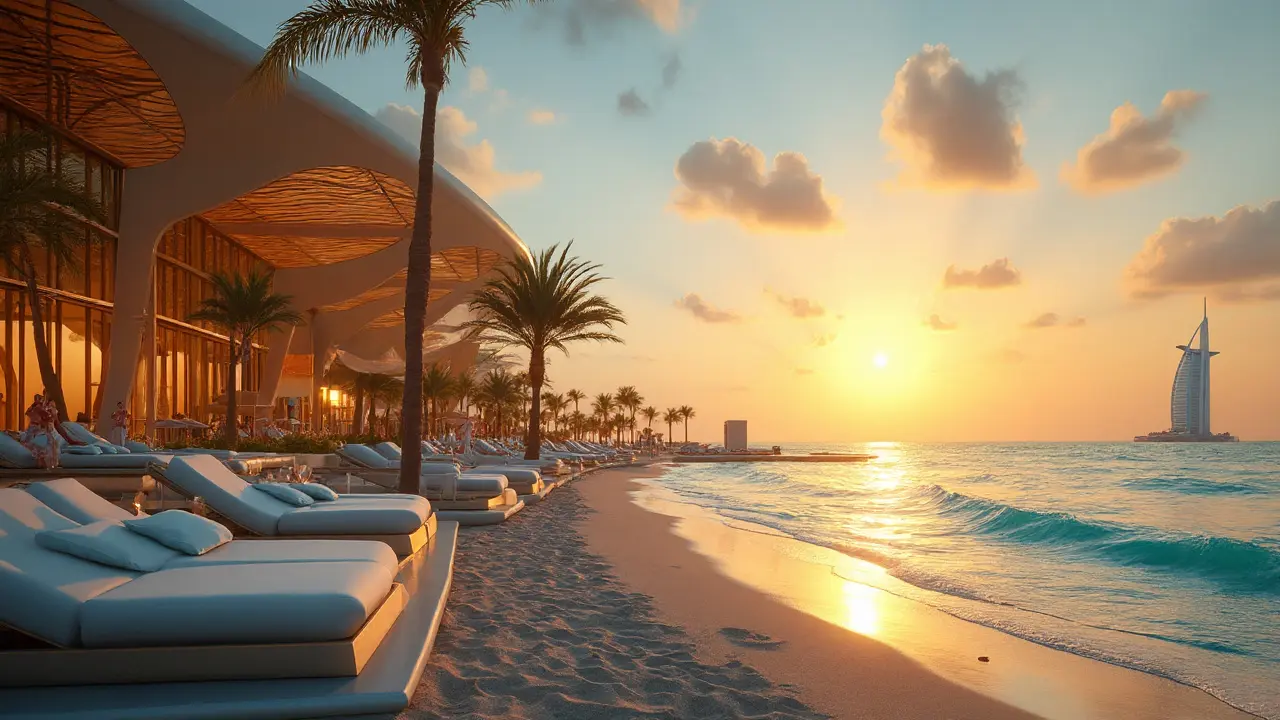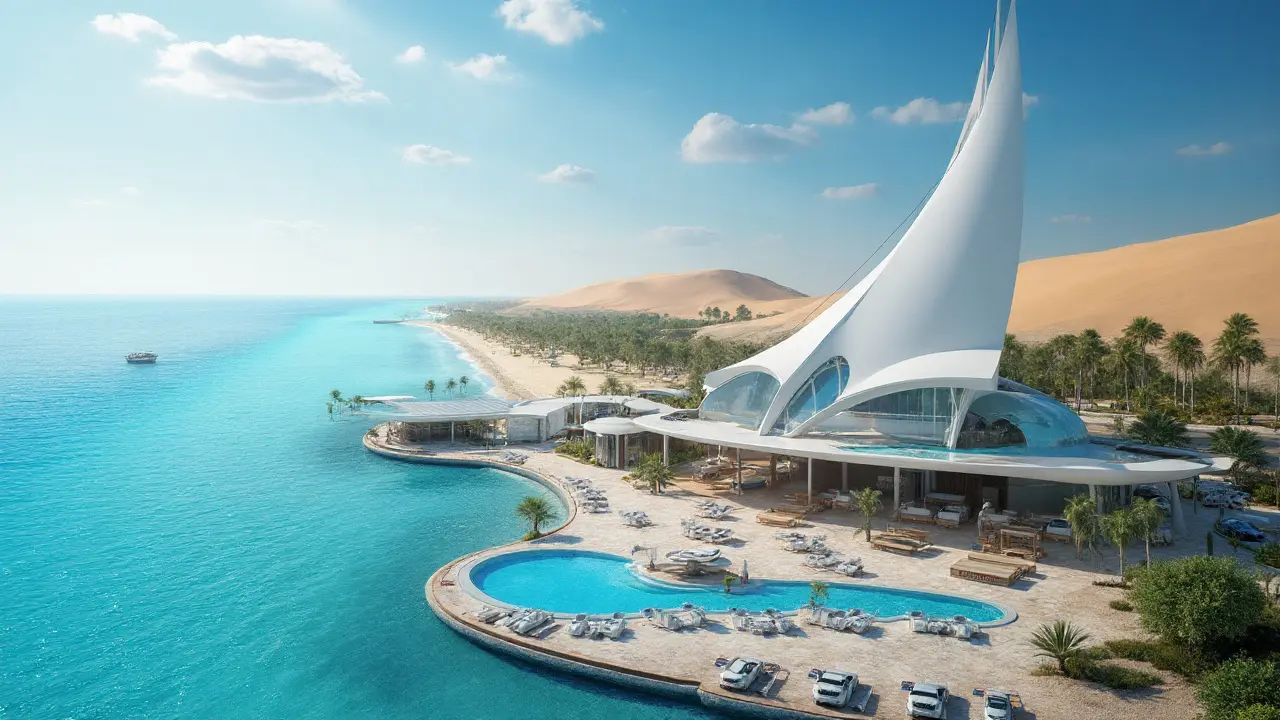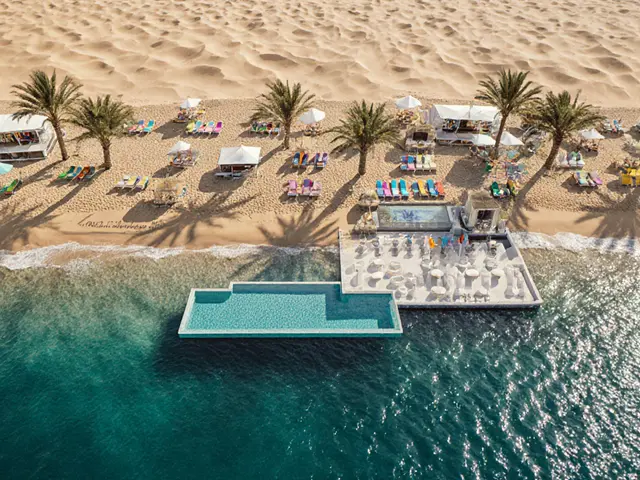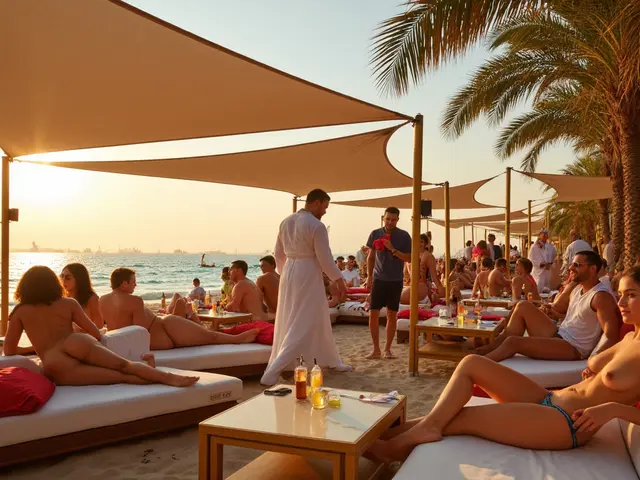Spectacularly Designed Beach Clubs in Dubai: Architecture That Wows

Spectacular Beach Club Architecture is a design niche that blends coastal leisure with artistic structural concepts, creating iconic landmarks on the Dubai waterfront. In Dubai, where the skyline already dazzles, beach clubs have become the next canvas for architects eager to push the boundaries of form and function. From the soaring glass canopy at Nikki Beach Dubai to the brutalist dunes of Zero Gravity, each venue offers a unique visual narrative that attracts locals, expats, and tourists alike.
Why Architecture Matters at a Beach Club
Beyond aesthetics, the architectural language of a beach club dictates flow, comfort, and the overall vibe. A well‑designed roof can filter the intense Gulf sun while preserving stunning sea views, and an innovative layout can separate day‑time families from night‑time party crowds without building separate venues. In Dubai’s hot climate, sustainability features such as passive cooling, reflective façades, and reclaimed seawater pools also become selling points for environmentally‑aware visitors.
Key Architectural Styles Shaping Dubai’s Beach Scene
- Modern Minimalism: Clean lines, glass walls, and hidden service areas. Example: White Lotus Beach Club uses floor‑to‑ceiling glazing that mirrors the turquoise Gulf.
- Arabesque Futurism: Traditional geometric patterns rendered in steel and LED lighting. Blue Marlin Abu Dhabi (operates in Dubai’s satellite locations) blends classic mashrabiya screens with neon accents.
- Organic Brutalism: Raw concrete forms that echo sand dunes. Zero Gravity showcases a concrete wave structure that feels both solid and fluid.
- Eco‑Luxury: Green walls, solar shading, and reclaimed wood. Al Qasr Beach Club incorporates a living wall of native palms to reduce heat gain.
Top 5 Beach Clubs with Spectacular Architecture in Dubai
Below is a quick snapshot of the most talked‑about venues, focusing on their architectural highlights, amenities, and price brackets.
| Club | Architectural Style | Signature Feature | Location | Typical Price (per person) |
|---|---|---|---|---|
| Nikki Beach Dubai | Modern Minimalism | Glass‑capped infinity pool | Pearl Jumeirah | 150‑300AED |
| Zero Gravity | Organic Brutalism | Concrete wave canopy | Skydive Dubai, Al Barsha | 120‑250AED |
| White Lotus Beach Club | Modern Minimalism | Full‑height glass walls | Jumeirah Beach Residence (JBR) | 100‑200AED |
| Blue Marlin Abu Dhabi (Dubai Pop‑up) | Arabesque Futurism | LED‑lit mashrabiya screens | Sunset Beach, Dubai Marina | 130‑270AED |
| Al Qasr Beach Club | Eco‑Luxury | Living vertical garden | Burj Al Arab Resort | 200‑350AED |
Deep Dive: Architectural Highlights of Each Club
Nikki Beach Dubai - This club was conceived by internationally‑renowned architect Jean‑ClaudeBodart, whose brief was to create a “transparent oasis” that never hides the sea. The main pool is encased in a 30‑meter glass prism, allowing sunlight to cascade into the water while offering uninterrupted views of the Arabian Gulf. The interior uses marble sourced from Italy, but the real wow factor is the retractable roof that opens for sunset parties, creating a seamless indoor‑outdoor transition.
Zero Gravity - Designed by the Dubai‑based studio ArchiScape, the club’s signature concrete wave was poured in a single 48‑hour operation. The structure’s curvature mimics the dunes of the nearby desert, providing natural acoustic amplification for live DJs. Integrated chilled mist jets sit within the wave, offering a refreshing micro‑climate during the scorching afternoons.
White Lotus Beach Club - The architects, ZahaHadid Architects, took a parametric approach, using algorithms to generate a façade that shifts from opaque to transparent according to the sun’s angle. The resultant glass skin reflects pink sunrise hues, turning the club into a living sculpture. Sustainable features include solar‑powered LED lighting and a seawater desalination system that feeds the club’s beachfront pool.
Blue Marlin Abu Dhabi (Dubai Pop‑up) - While the brand originates in AbuDhabi, the Dubai pop‑up was engineered by MimarTawfik to celebrate Emirati heritage. Geometric mashrabiya patterns are laser‑cut into steel panels that double as sunshades and projection surfaces for nightly light shows. The club’s interior features terrazzo flooring embedded with crushed seashells, echoing the marine setting.
Al Qasr Beach Club - Partnered with Sustainability Design Group, this venue emphasizes biophilic design. A 20‑meter vertical garden of native palms and succulents runs along the main lounge wall, providing natural insulation and a calming backdrop. The roof incorporates photovoltaic tiles that generate up to 30% of the club’s electricity, a claim verified by the Dubai Electricity & Water Authority.

Practical Tips for Visiting These Architectural Gems
- Book a sunset table at least 48hours in advance - the panoramic views fill up quickly, especially at Dubai beach clubs like Nikki Beach.
- Dress code matters: most venues enforce smart‑casual attire; avoid flip‑flops after sunset.
- Take advantage of weekday daytime offers - many clubs provide complimentary beach cabanas at reduced rates from Monday to Thursday.
- Plan transport: Uber and Careem have dedicated “Beach Club” services that include a drop‑off at private entrances, saving you the hassle of navigating crowded parking.
- Check for special events: architecture‑themed nights, art installations, or sustainability workshops often happen on the first Friday of each month.
Related Concepts: How Architecture Intersects With Lifestyle in Dubai
When you think of Dubai’s lifestyle, the word “luxury” instantly pops up, but architecture adds the invisible layer that shapes the experience. The Dubai Design District (d3) has become a breeding ground for architects experimenting with modular beach‑pavilion concepts. Likewise, the upcoming Al Seef Waterfront project promises a new wave of heritage‑inspired beach clubs that blend traditional coral‑stone façades with modern glass, hinting at the next evolution of Dubai’s beachfront aesthetic.
Future Trends to Watch
Dubai’s developers are already filing plans for floating beach clubs that would anchor offshore, using pontoons that adjust to tide levels. These projects aim to combine marine engineering with avant‑garde architecture, offering panoramic 360‑degree views of the city’s skyline. Expect increased integration of AR (augmented reality) overlays, where visitors can point their phones at a building’s façade and instantly learn about the design philosophy, construction materials, and even the climate‑control algorithms behind it.
Frequently Asked Questions
Which Dubai beach club has the best sunset view?
Nikki Beach Dubai tops the list thanks to its glass‑capped infinity pool that mirrors the sky, offering an uninterrupted horizon as the sun dips behind the Palm Jumeirah.
Are the beach clubs family‑friendly during the day?
Yes. Most venues, including White Lotus and Al Qasr, designate separate pool zones and menu sections for families, while keeping the night‑time party atmosphere isolated.
Do any of the clubs offer sustainable dining options?
Al Qasr Beach Club leads with a farm‑to‑table menu sourced from local Emirati farms, complemented by a zero‑waste kitchen that recycles organic scraps into compost for the on‑site garden.
What’s the dress code for evenings at Zero Gravity?
Smart‑casual is mandatory. Think sleek shirts, tailored shorts, and closed‑toe shoes. Swimwear is allowed only in the pool area before sunset.
Can I host a private event at any of these clubs?
All five clubs provide bespoke event packages, ranging from intimate beachfront dinners to full‑scale corporate galas. Early booking (minimum 30 days) secures the best spaces and customized architectural lighting setups.


